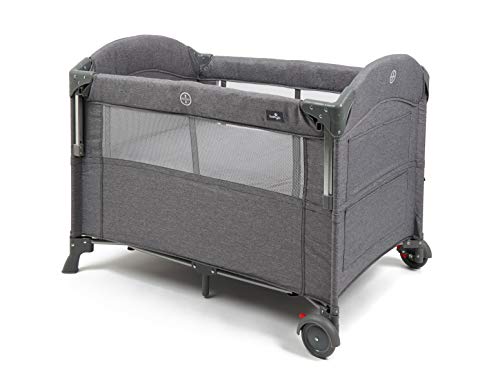7 Essential Tips For Making The Most Of Your Baby Co Sleeper Crib
Understanding Baby Co-Sleeper Cribs: A Comprehensive Guide
As new parents get ready for the arrival of their little ones, the dispute over sleeping arrangements typically develops. The choice in between different cribs, bed-sharing, and co-sleeping is a significant factor to consider. Over the last few years, co-sleeper cribs have actually gained considerable popularity due to their perceived benefits for both parents and infants. just click the up coming post will explore what baby co-sleeper cribs are, their benefits and disadvantages, how they compare to traditional cribs, and important security guidelines.
What is a Baby Co-Sleeper Crib?
A baby co-sleeper crib, likewise called a bedside crib or sidecar crib, is created to be placed next to the parent's bed. It enables parents to have their baby nearby during sleep without the dangers connected with bed-sharing. These specially designed cribs frequently include adjustable height settings, security straps, and a removable side panel, making them a convenient choice for nighttime feeding and soothing.
Key Features of Co-Sleeper Cribs:
- Height Adjustability: Enables the crib to line up perfectly with the parents' mattress.
- Removable Side Panel: Facilitates easy access to the baby for feeding or relaxing.
- Safety Straps: Secure the crib to the parent's bed to avoid any gaps.
- Compact Design: Saves space while offering comfort.
Benefits of Co-Sleeper Cribs
Co-sleeper cribs use various benefits for both parents and babies.
Convenience of Nighttime Feeding: The close proximity permits parents to more quickly breastfeed or bottle-feed during the night.
Promotes Bonding: Parents can more easily comfort their babies, developing a strong psychological bond.
Enhanced Sleep: Many parents discover that having the baby close at hand minimizes nighttime anxiety, leading to better sleep for everybody.
Easier Monitoring: Parents can keep a close eye on their baby while sleeping, guaranteeing they are safe and comfortable.
More secure Alternative: Co-sleeper cribs lower the risks associated with bed-sharing, such as suffocation incidents.
Table 1: Advantages of Co-Sleeper Cribs
Advantage
Description
Convenience of Nighttime Feeding
Relieve of access for breastfeeding or calming babies at night.
Promotes Bonding
Improved psychological connection through distance throughout sleep.
Improved Sleep
Reduced adult stress and anxiety causes a more relaxing night.
Simpler Monitoring
Localized view enhances reassurance for parents.
Safer Alternative
Lower danger of suffocation compared to bed-sharing.
Disadvantages of Co-Sleeper Cribs
While co-sleeper cribs include several benefits, they likewise have some drawbacks.
Restricted Use: Co-sleeper cribs are generally only used for the first 6 months or two, up until the baby begins to move around.
Expense: Quality co-sleeper cribs can be more expensive than standard cribs.
Space Constraints: A co-sleeper crib needs sufficient space next to the adult bed, which might not be available in smaller sized spaces.
Feasibility for Larger Adults: Some grownups may find it uneasy to lean over the crib for nighttime requirements.
Table 2: Disadvantages of Co-Sleeper Cribs
Drawback
Description
Restricted Use
Functional only for a brief time till the baby grows.
Expense
Higher price point compared to standard choices.
Space Constraints
Requires adequate space surrounding to the adult bed.
Expediency for Larger Adults
May trigger pain when reaching over for nighttime care.
Comparing Co-Sleeper Cribs to Traditional Cribs
The option between co-sleeper cribs and standard cribs considerably affects the parenting experience.
Key Differences:
Feature
Co-Sleeper Crib
Standard Crib
Distance
Next to moms and dad's bed
Different room
Availability
Easy grab nighttime care
Needs getting out of bed
Duration of Use
0-6 months, depending on growth
Normally utilized for numerous years
Size
Compact and space-saving
Usually larger and more stable
Security Guidelines for Co-Sleeper Cribs
To ensure the best sleeping plan, parents must adhere to particular security standards when utilizing a co-sleeper crib:
Secure the Crib: Use safety straps or attaching systems to protect the co-sleeper to the adult bed, reducing space between the two.
Use a Firm Mattress: Make sure the mattress is firm and fits comfortably within the crib.
Prevent Soft Bedding: Minimize the use of soft things such as pillows, blankets, or stuffed toys in the crib.
Screen Baby's Movement: Stay attentive to how the baby moves during sleep.
Frequently Asked Questions about Baby Co-Sleeper Cribs
Q1: Are co-sleeper cribs safe?
A1: Yes, when used according to safety guidelines, co-sleeper cribs can offer a safe sleep environment while keeping the baby close to the parents.
Q2: How long can I use a co-sleeper crib?
A2: Co-sleeper cribs are generally designed for use from birth up until the baby is around six months old or can push themselves up.
Q3: Can I use a co-sleeper crib if I have a small bed room?
A3: Yes, most co-sleeper cribs have a compact design, making them suitable for small spaces.
Q4: Do co-sleeper cribs require assembly?
A4: Most co-sleeper cribs require some assembly, but the process is typically straightforward and accompanied by guidelines.
Q5: What should I do if my baby grows out of the co-sleeper?
A5: Transition your baby to a standard crib in their own room or a close-by place that follows safe sleep standards.
Baby co-sleeper cribs provide an engaging choice for parents who want to keep their infants close by throughout sleep. They provide many advantages, including ease of nighttime feeding and cultivating close bonds. Nevertheless, like all parenting choices, it's vital to weigh the advantages and drawbacks and consider individual living circumstances and preferences. By sticking to security standards, parents can develop a protected sleep environment for their kids, guaranteeing assurance for the whole household.
